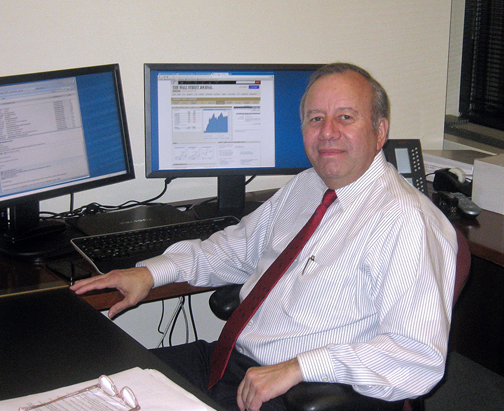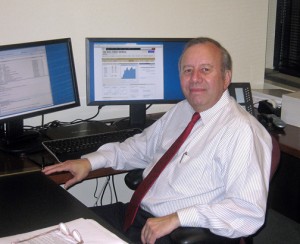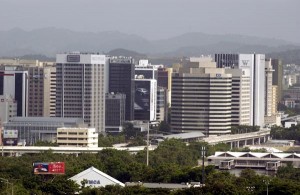Puerto Rican banking exec González ‘at home’ at FHLBNY

It was two weeks ago that Puerto Rican banking veteran José Ramón González took over the helm of the Federal Home Loan Bank of New York, an institution that is one of the main driving forces behind the island’s financial district.
And while he’s new in his seat, González’s history with the FHLBNY spans a decade, something that has made his transition from board member to president “easy.”
In an interview with this media outlet, González offered his take on the challenges that financial institutions face in light of the still fragile economy and his agency’s role in stabilizing banks in his area of responsibility: New York, New Jersey, Puerto Rico and the U.S. Virgin Islands.
“This is a year in which there are still many challenges for our member financial institutions. While the economies of New York and New Jersey are growing, they aren’t performing with the expected strength,” said González, who prior to heading to New York was a high-ranking executive at Oriental Financial Group. “The situation is even more complicated in Puerto Rico and the USVI.”
That said, González confirmed that the FHLBNY will “continue to provide liquidity to members to fuel their growth in easy or complicated markets.”
The FHLBNY has $120 billion in assets, making it the largest of the 12 banks comprising the Federal Home Loan system, which has a combined $834 billion in assets. The New York-based office has 380 members in the district, including Puerto Rico’s six major banks — Banco Popular, Oriental, FirstBank, Banco Santander, Scotiabank and Doral Bank — as well as the Puerto Rico Housing Finance Authority.
In scope, the bank González heads is comparable to the Government Development Bank, which he presided from 1986 to 1989.
“In scale and feel of the staff, it resembles the GDB, especially because the FHLBNY is a wholesale bank with 280 employees,” he said. “Behind the 380 members is a great portion of the United State’s financial assets and millions of clients who benefit through our activities.”
The FHLBNY’s asset portfolio includes $90 billion in loans, of which $2.5 billion are assigned to Puerto Rico banks, he said.
“It’s not the biggest part of our portfolio, but it has always been an important unit, since the federal banking system was created in 1932,” González said. “We’ve placed attention on it and have seen significant activity over the years.”
Higher demand for financing
That activity is generated through a higher demand for financing than deposits, he said.
“Puerto Rican banks are not self-financed and depend on wholesalers for funding. We’ve always had good representation from banks on the island in the area of advances. We continue to be a key element in the liquidity of local banks, at reasonable costs,” González noted.
In other words, without the allocations from the FHLBNY, Puerto Rican banks would likely see greater challenges in their day-to-day operations.
“The FHLBNY, and the system in general, was created to be the first resource for liquidity in the market. We’ve always been available in good times and in bad, to make sure banks are liquid at all times,” he said.
Puerto Rican banks went through a significant rough patch about four years ago, when the Federal Deposit Insurance Corp. headed three separate assisted transactions that resulted in the closing of three banks — Eurobank, Westernbank and R-G — which were simultaneously picked up by Oriental, Banco Popular and Scotiabank, respectively.
“After that, there has been modest growth because there has been a de-leveraging to ensure adequate capital levels,” he said. “If you look back to 2010 and now, there has been an improvement in capitalization, delinquency and defaults. Growth has ben modest in part due to the economy and as a result of banks wanting to maintain a balance.”
The sector, he said, is not exactly in ideal condition, because “it’s tough for a banking sector to thrive when the economy in which it does business is in chronic recession. But considering what we’ve been through, banks have been able to regain balance.”
He said the banking sector’s leadership has done most of what was needed to be done in Puerto Rico, which was to clean up balances, sell non-performing loans, raise additional capital to raise their levels.
“What is needed to take it to a strong and vigorous levels is to have an economy that produces growth and demand for financing, as well as new financial activity,” he said, noting that is not something that is happening in Puerto Rico.
Other issues such as Puerto Rico’s migration and aging population also make it challenging for the banking sector to grow or to achieve another level of viability, he said.
“The banking cycle, clients need products when they’re younger. The demographic issue feeds into the situation in a not-so-positive way,” said González.
As long as banks are operating in a stagnant or recessionary economy, prudency is key, he said.
“There’s no margin for error. This is back-to-basics banking. The banking sector is not a motor of an economy. It can’t create economic growth where there is none,” he said. “If you’re not growing primary or secondary sectors of an economy, a terciary sector such as banking will not move it forward.”
González served as vice chairman of the FHLBNY board from 2008 through 2013, as the chair of the compensation and human resources committee in 2008, and has served as an elected industry director since 2004. He succeeded Al DelliBovi as president effective April 1.















